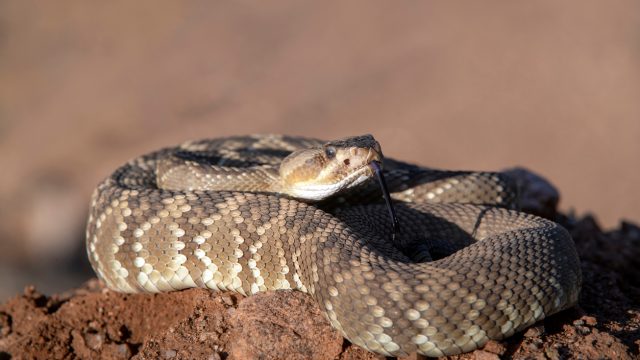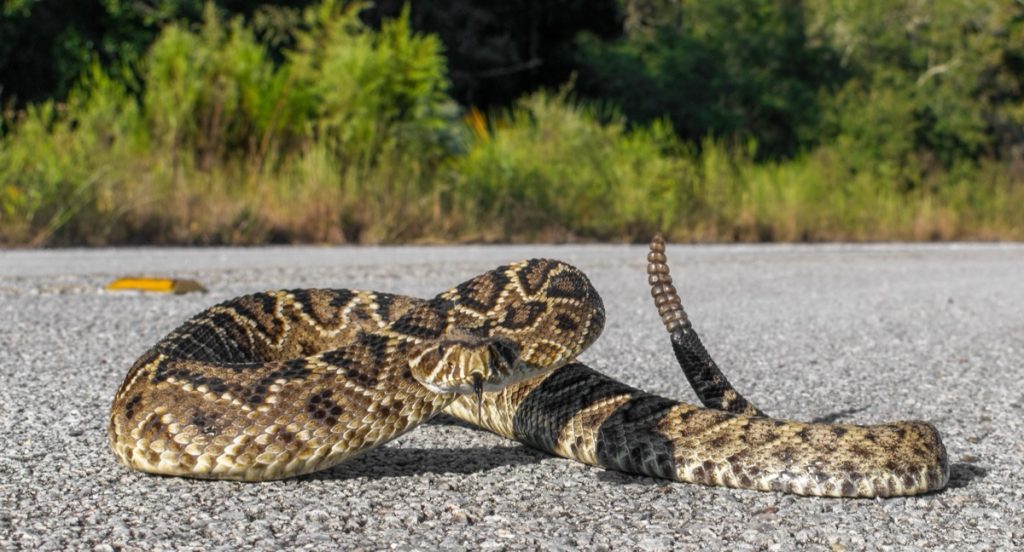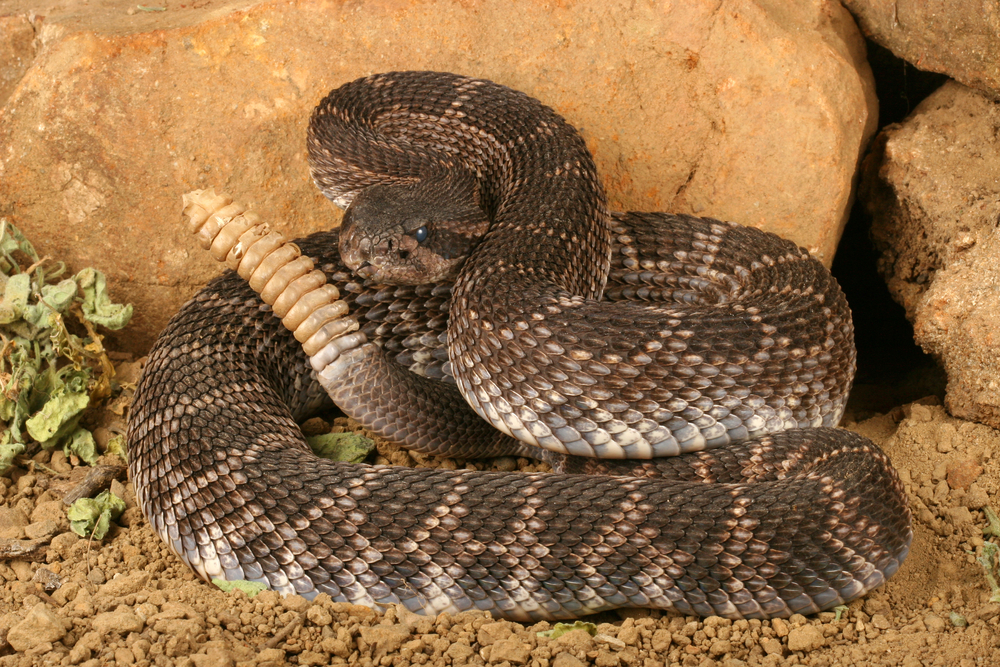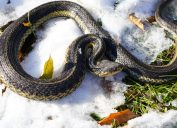It's Snake Season: "Stay Alert" for This Venomous Species, Authorities Warn
This is the time of year when it pays to be extra cautious about reptiles.

The fact that we cohabitate with snakes pretty much everywhere in the U.S. means that there's never really a time when they shouldn't be on your radar—even in the winter. After all, being aware of their behavior and habits can make it easier to avoid accidentally disturbing them on your property or out in the wild. And even though the weather is cooling down, it's technically still snake season for one particular venomous species—meaning you should "stay alert," authorities say. Read on to see which type of reptile might be more visible right now.
READ THIS NEXT: The No. 1 Sign There's a Snake in Your Kitchen.
Snake season can stretch longer depending on where you live.

Depending on weather patterns and where you live, the high season for snake bites typically begins in April and stretches through October when the weather is warmer and we are spending more time outdoors, according to the U.S. Department of Agriculture's (USDA) Forest Service.
"Snakes are cold-blooded, meaning that they rely on external sources, such as the sun, for a large chunk of their warmth and energy," Stewart Flynn of Bug-N-A-Rug Exterminators previously told Best Life.
But even as the weather cools off come fall, other biological factors can still make snakes more visible—especially in warmer climates. In some areas, certain types of venomous snakes are giving birth to live young that will seek hiding places in yards and wooded areas. However, one particular venomous snake species is especially active for a different reason right now.
Authorities are warning the public "stay alert" for this venomous snake during its mating season.

On Nov. 5, police in DeSoto County, Florida, were called to a condominium complex in Lake Suzy after receiving a report from a resident of a large snake "curled up" near a sidewalk, the Miami Herald reports. Officers arrived to find an eastern diamondback rattlesnake measuring about five feet long resting near the residences.
Fortunately, authorities arrived with the proper equipment and training necessary to wrangle the venomous reptile. They were able to safely "capture, remove, and safely relocate" the snake to a wooded area nearby, according to a Facebook post from the DeSoto County Sheriff's Office.
But the officers also warned local residents to stay on the lookout for species this time of year. "Peak mating season for the eastern diamondback rattlesnake occurs in late summer and fall. So always stay alert for wildlife no matter where you are," the agency warned.
RELATED: For more up-to-date information, sign up for our daily newsletter.
Experts warn the snake is the "most dangerous in the U.S."

While there are plenty of different types of venomous reptiles in the U.S., the eastern diamondback rattlesnake stands out for a few reasons. "It's the most dangerous snake in the United States," Jimmy Stiles, a herpetologist and PhD candidate at Auburn University in Alabama, told AL.com. "So it's definitely one that people should be familiar with."
The animals grow three to six feet on average—but up to eight feet in some cases—and have an average weight of 10 pounds, making them "North America's longest and heaviest venomous snake," according to the Smithsonian's National Zoo & Conservation Biology Institute. They're also native to the southeastern U.S., across all of Florida up to the North Carolina coast and over through southern Mississippi and eastern Louisiana.
And besides their telltale defensive rattle, it can be easy to pick the species out of a lineup due to other characteristics. "They are best identified by their diamonds, which are dark diamonds on the top of their back, bordered by bright yellow," Stiles told AL.com. "Diamondbacks also have dark rings towards the back of their tail."
Here's how to avoid a run-in with an eastern diamondback rattlesnake.

Even though it's best to stay alert during their mating season, there are a few ways you can decrease your chances of crossing paths with eastern diamondback rattlesnakes. Of course, staying aware of your surroundings and listening for the snake's defensive buzzing rattle gives you an advantage that humans don't have with any other species. The reptiles are also most commonly found in areas like overgrown fields or abandoned farms near pine forests, so you should exercise caution if working in unkempt areas, according to the National Zoo.
And given the rattlesnake's preferences, there are also some ways you can make your own property less inviting to them.
"A yard that is unattractive to snakes—especially the venomous ones—has the following characteristics: the grass is kept mowed; plants chosen for landscaping are 'spindly' rather than bushy so that they cast little shade and you can easily see the base of the bush; firewood is stored on a table or other platform elevated a few feet above the ground, with no debris piles; and snakes cannot crawl underneath the buildings because they are flush with the ground or because access under porches or into crawl spaces is blocked off," Emily Taylor, PhD, a professor of biological science at California Polytechnic State University, San Luis Obispo and owner of Central Coast Snake Services, wrote in a Medium post.





















